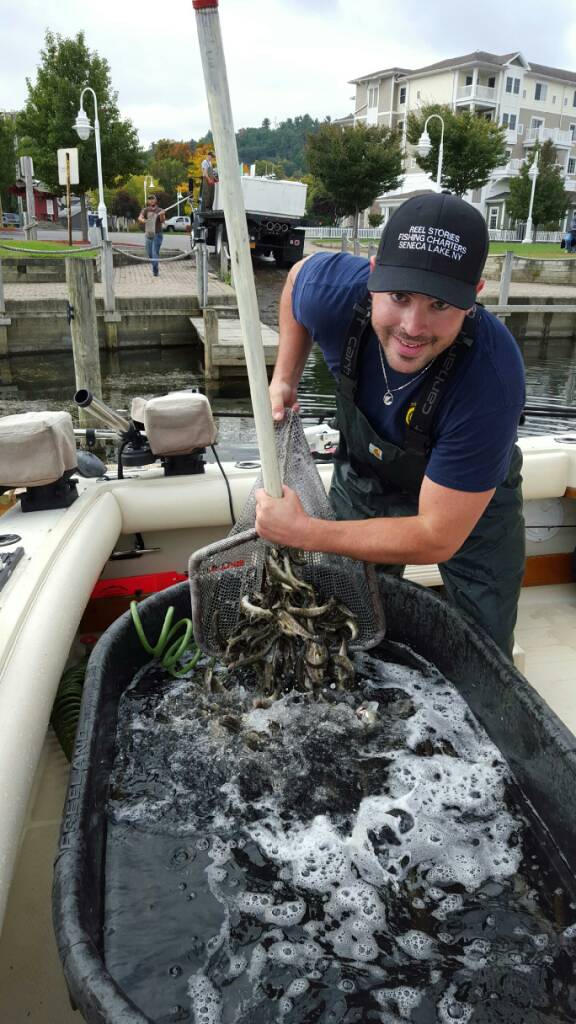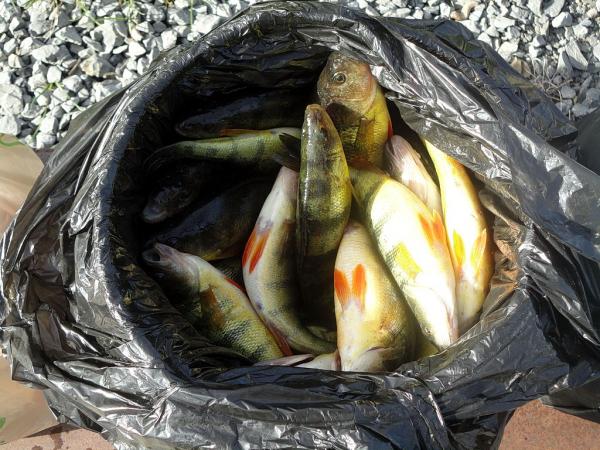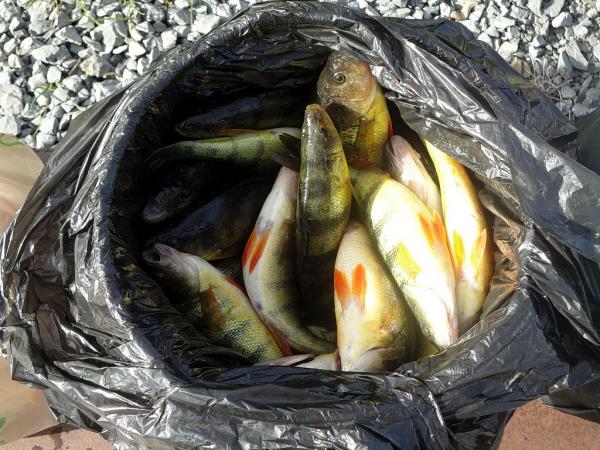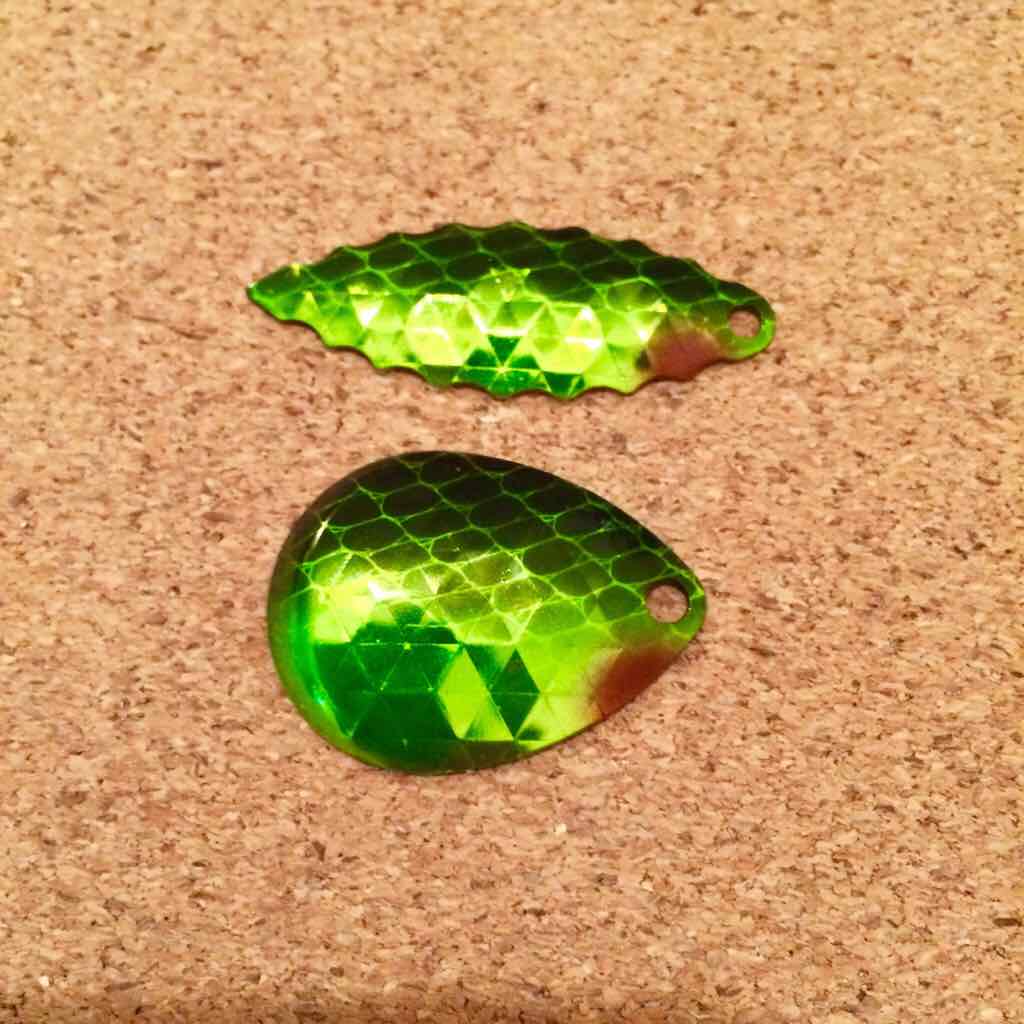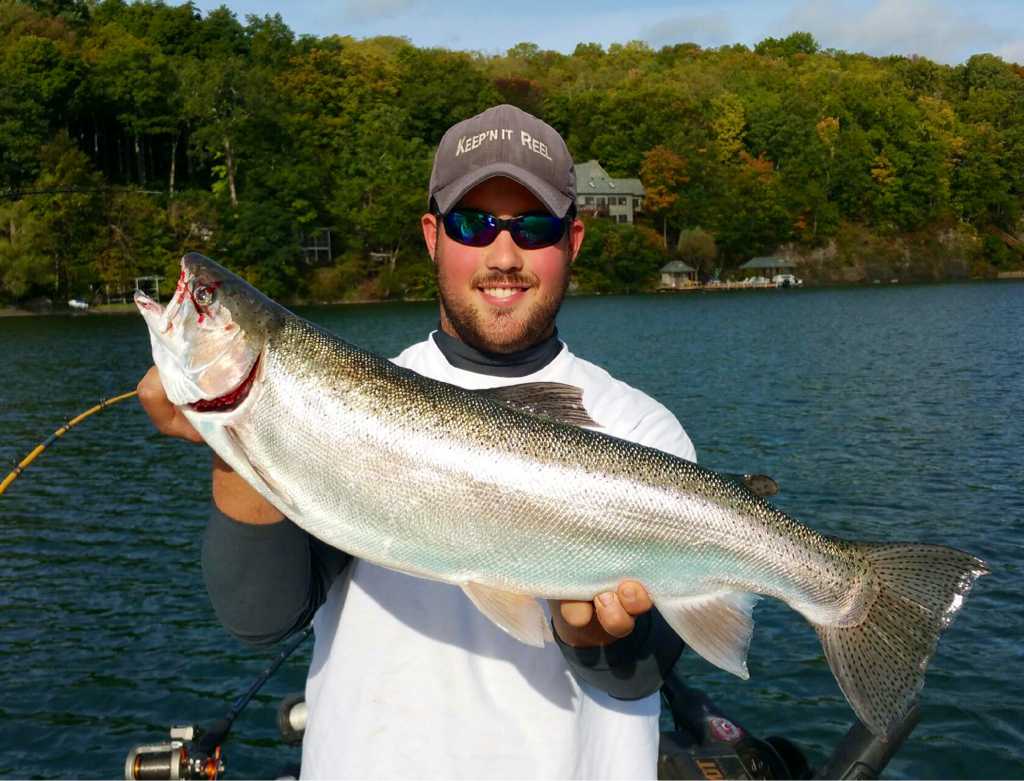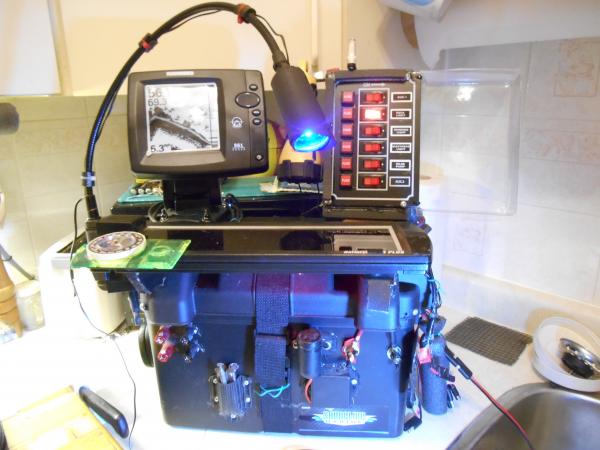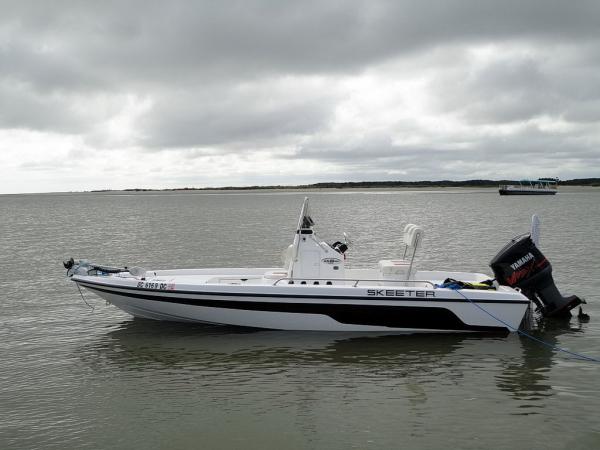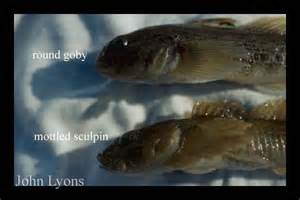-
Posts
13,872 -
Joined
-
Last visited
Everything posted by Sk8man
-
The "balancing act" that Seneca performs (along with the other Finger Lakes and Great Lakes) is truly a precarious one and the effectiveness of it depends on many factors - some within the control of humans and some not. All of these bodies of water are experiencing problems and stress. My first fishing encounter with Seneca occurred in July of 1949 when I caught my first smallmouth black bass in the Yacht Club bay at the north end and since that time I've seen many ups and downs in the fishing. At that point in time you could see all sorts of fish of various sizes swimming around in the water right from shore....not so anymore. In the mid to late seventies it took around 6 hours to catch a legal salmonid and when the stocking effort increased the fishery for trout at least rebounded very noticibly and with some fluctuations since it has remained a viable fishery up to the introduction of the invasives. One of the things that I find a striking difference in these lakes (I have fished all of them but Otisco for many years) is the lack or absence of immature fish of various species (large and smallmouth bass, perch, sunfish and bluegills minnows of various types etc.) around the periphery of the lakes (e.g. near docks, among the rocks and in the grass beds) as these areas used to be packed with small fish. Instead these areas are covered with zebra mussels and appear quite "sterile" and I think this situation is a true indicator of the relative health of the lakes that can be readily viewed firsthand regardless of trawling information for bait or deep water species samples for that matter. The introduction of the invasive species such as Zebras Quaggas fleas etc. in my view has totally changed the very nature of these lakes because they have pretty much wiped out the phytoplankton and zooplankton that the fry and immature fish feed on and the traditional spawning beds for various species have also been contaminated and destroyed leading to poor reproduction of baitfish and everything above it in the food chain. There may be an occasional cloud of sawbellies and a few distributed or suspended but I still remember seeing bait covering vast areas of the lakes from 150 ft to the surface for the lengths of many football fields.and the bottom covered with what appeared to be rainbow smelt (which have largely disappeared like the canary in the coal mine). When you take out something that basic at the lowest level of the food chain it is disasterous but it takes time to see the full result. It takes years for this to happen and given the size of these bodies of water (vs. ponds etc.) it appears gradual so the true total effects are not seen right away. It isn't just a matter of the levels of baitfish present in the lakes either or the predator to bait ratio it is the variety of living organisms available lower in the chain to support everything higher in the food chain. These major problems and shifts are not going to be solved by just increasing stocking levels alone or even getting a better handle on the predator to bait relationship. Some sort of "restorative" act (s) has to take place in changing back the very nature and water structure of these lakes and this will not be happening anytime soon. Don't be deluded in thinking that just increasing stocking levels or getting the balance of bait to salmonids in balance will solve this situation
-
-
Sounds like a good plan to me....also with a youngster that age the car can be fairly nearby too. I'd be bringing some egg sacks along as well fished off a slip sinker and if you can find perch in the shallower area maybe imitation small plastic crayfish and plastic minnows (small shad) used on small jigs. You can get into some pretty deep water right from shore there too..Good time to break her in on using a life jacket as well.
-
I believe that a lot of the laker spawning has traditionally in years past anyway happened down near Peach Orchard as well as the north end so it could make real good sense to put them in down there. Hopefully some of the spawning beds have recovered by now from the flooding years ago and the silt deposits on the beds.
-
I have never believed that taking too many rainbows by trolling fishermen has been the origin of the general problem with low numbers being reported on Seneca. The major possible problem in my view was that of stream degradation down near you relative to flooding and the fact that quite a bit of spawning was dependent on it for a particular year class (s) as it is at the south end here on Canandaigua and possibly the "lifting" of spawners while vulnerable. I never experienced that reported problem on Seneca or here because I was specifically fishing for bows in the top 70-75 ft of water (on purpose to avoid lakers) while many folks use a much more general approach to fishing and most of the time I was fishing a different part of the lake (northern half) where there are active spawners using the smaller streams and not dependent on the one down in your area. If the numbers of rainbows have come up as quickly in the lake as suggested it would probably not be because of the one fish rule it would relate to better spawning conditions and less or no flooding of the beds the past few years in my view. I am not against the one fish rule per se but I think it was prematurely enacted and incompletely thought out and it was inappropriate to extend it to lakes where there is no known problem (e.g. Canandaigua) just for the sake of "continuity". As you folks reported after the recent tourney there isn't a lack of rainbows here at all.
-
I guess despite it being VERY unpopular and especially coming from a long term stream fisherman it could have been much more productive to close the stream fishing for a few years so that the redds aren't trampled at least on that one main stream and it makes it easier for enforcement because nobody would be allowed there day or NIGHT. I still remember seeing an 18 lb. rainbow in the ice chest in front of Harman's Sport Shop when I was a kid and realizing even then what a great fishery we had there and I too hope it returns to at least a better one for them than now.
-
-
My thinking is that the lake is very big and there are many feeder streams on it and not all of the spawning is at the one at the south end as I stream fished many of the others on both sides of the lake (names left out on purpose ) for many years with very low fishing pressure because few fishermen realized they were present there . The main problem was locals living right nearby who took many of the spawners at night illegally. It could be that the rainbows already in the lake (and streams) could benefit from the addition of some genetically strong rainbows introduced and stocked near the other streams that have water year round. The complaint was that there were few rainbows in Seneca and that the stream at the end of the lake had been severely compromised with high water conditions and environmental factors which compromised the spawning efforts. For years bows have been my "specialty" and I often fish specifically for them and the one limit is a problem in that regard because even though I release nearly all fish if a bow goes belly up I go back for them and keep them so that pretty much ends the fishing for them because if another does the same you have no choice but to leave the fish and that is wrong. They are a wonderful fish and it would seem to me that the existing population of them could use some help in proliferating. Adding more landlocks is also highly desirable as they are real acrobats and add a lot to the fishing experience. I wish they would add some to Canandaigua too but the available streams are much more limited for spawning here. Thanks for helping out with the stocking efforts Nick.
-
-
-
A perch rather than sawbelly diet could in conjunction with high numbers of lake trout (competition for food sources) explain the smaller size of the lakers too as in Skaneateles where there aren't sawbellies few lakers reach large sizes with the exception of a very few giants that probably eat anything they want including other smaller lakers.
-
-
Hey Mike we saw you at the north end in the AM but we were in close in the grey Penn Yan fishing for perch and it was a good day for us as well Man... those jug rigs were almost back to Naples Nice going on the bows Guess maybe you guys can see why I had the problem with the one limit on Canandaigua a while back but hopefully it will help out the fishing long term anyway.
-
-
Over the years I've tried a number of things which I hoped would lead to survival of released smaller fish. I fish solo quite a bit so what I have ended up with is this : first I use only single hooks on all spoons (I know some folks will say yeah but they can also hook fish through the eye and it is true....sometimes) it allows me to use needle nose pliers at the side or back of the boat to grasp the stainless steel single hook with the pliers and with a quick twist of the wrist while the fish is still in or near the water I am able to release the hook without touching the fish or bringing into the boat. This I feel is essential because touching the gill area and keeping the fish out of water on the bottom of the boat or in the net is a prescription for their death. One of the things I have always wondered about the release of large fish and especially salmon is regardless of "revival" method do they actually survive? I know they may swim away after seemingly revived from the various methods but do they later die from the lactic acid build up in their system combined with the stress of fighting for their lives? I don't know the answer to this question. It may be a moot issue for mature kings but for Atlantics and other fish it could be important. My feeling is that if I intend to release a fish I am not going to handle it any more than possible and if so will never put my hands or fingers near the gill area or hold it vertically and unsupported but like nearly everyone else I like to take and share pics of decent fish too.
-
Just some thoughts on the way the braid is being used. I've found with the light braid on my ultralights (perch stuff) that the braid is VERY buoyant and floats on the water rather than slowly sinking like light mono. If a lot of it is out in back of the boat (most lines as well) there is a bowing of the line and adding the floating quality of braid it may not be where you think you are running depth-wise when running say as a top line. I only run it either weighted (as in snap weights) or with a dipsey and usually off boards. Unlike Lake O most of the fish on the Fingers you can "hand line" in if necessary so you can use much longer fluoro leaders on them where you don't have to worry about big salmon getting hold of your lure. With that said a 20 ft. leader should be enough most of the time. Braid shows up real well in the water so it may not be the best option for surface or shallow water fishing especially for fish like browns or landlocks. With them given the usual water clarity on the Fingers you'll want to be using light mono with a light fluoro leader and very small black ball bearing swivel when fishing up high.
-
I'm always interested in Vince's view of things and I believe he is on the "bulls eye" on the lake situation. On another note I've seen the effects of the cormorants on the fresh water lakes at Cape Cod for over the last 30 years (in-laws place Mid-Cape) and they not only decimate the fish and bait populations but they are also carriers of disease and seriously pollute the waters they inhabit with their feces. Thankfully Lake O is large and the water is "flushed" fairly rapidly compared with the other Great Lakes and most other fresh water bodies in general or they would also be a health hazard. To expand a bit on Brian"s comments lakers are not only "opportunists" but they have a very diversified diet compared with some other species and they are also bottom oriented much of the time and that is where the gobies spend much of their time and in the Spring they both inhabit the same area of the water making it much more likely they will be "targets" at that time of the season. The lakers move to the depths when the temps increase (when the sawbellies also generally move out and down deeper) and they hunt the suspended pods of alewives then and seem to "rest" near bottom under the schools of bait and it used to be also the rainbow smelt then they were available.
-
Ralph is a great guy Steve and he always adds something relevant and of particular interest to us in his posts. One of the things I have noticed about that particular buoy over the past couple years is that much of the time you can just about double the wave height information and it will be close to reality for some reason. I've checked it many times while out there and while somewhat near it (e.,g. Hughes or Sodus Point) and that is what seems to be the case each time.... not sure why.
-
I've never heard that running with a spotlight on is illegal but if so I guess my take on it is that I'd rather be around to explain to the judge why I did it than have a bunch of people standing over me at the cemetery.. given some of the lunatics out there and potential obstructions in the water as I have a vivid memory of two such fatalities on Seneca Lake.
-
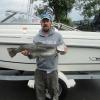
Where are the Steelhead?
Sk8man replied to farmerfreddy's topic in Questions About Trout & Salmon Trolling?
Brian is right Jeff.....they will probably be roaming around out deeper and usually around bait. They are much more mobile than the lakers or browns and sometimes there are young kings mixed in with them or near them and they will also often locate in the top layer of water out deep within 60 ft or so of the surface. You may want to troll a bit faster than usual too but with the usual stuff and some lines back a ways. -
-
I've always had a remotely operated spotlight on the front of my boat for this very reason and always have it on when running at night. I've seen/heard people running full tilt in the dark with no lights at all hooting and hollering and clinking beer cans yelling and talking loudly (obviously inebriated) while I was walleye fishing on Honeoye Lake and it is a disaster just waiting to happen.
-
-
Thanks guys and yes Keith it is really cool and we even got to see the full eclipse the other night from the upper deck of our friends place right there on the marsh and it was truly beautiful. The sting rays are something to be careful with but the large blue crabs do the most threatening and are really funny to watch. I caught several on the cut bait and it felt like they were the bait stealing Pinfish nibbling and then you'd pull in those damned blue crabs and they would threaten you with their claws in the boat when you tried to detach them. Funniest of all though were the little unidentifiable tiny fish that nibbled at the hairs on my legs and drove me nuts while wading in the marsh in shorts That was a first.
-


